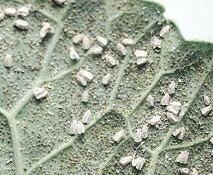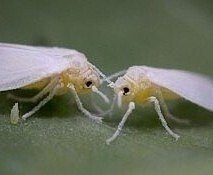
November Bug of The Month: Cabbage whitefly
What is Cabbage whitefly?
Cabbages belong to a genus of plants known as Brassica, which encompasses a wide range of different species and cultivars. Brassicas are unique in their ability to metabolise biologically active compounds called Glucosinolates, which are rich in sulphur and nitrogen, and have health benefits for us when included in a balanced diet. However, Glucosinolates have benefits for the brassicas too, since they have natural biopesticidal properties that help to protect a plant from many different herbivorous insects and microbial diseases.
Over millions of years though, a few of these herbivorous insects have evolved to survive on Glucosinolate-rich plants and have become specialist feeders, some of which even use these compounds to protect themselves from predation (i.e., the reason why Large Cabbage White butterfly larvae are rarely eaten by insectivorous birds). And one of the most common insects that feed on Brassicas, is a small sap-sucking Hemipteran species, called the Cabbage whitefly, Aleyrodes proletella.
Adult Cabbage whitefly look like tiny white moths, just over 1mm in length and are usually found feeding on the undersides of brassica leaves, where they cluster together to mate and lay eggs. Their eggs are laid in small circular groups, each having a basal spike that’s inserted into the leaf surface.
After a few days, the eggs hatch into small larvae that disperse across the leaf to find a suitable feeding site where they can insert their needle-like mouth parts (called stylets), into the leaf’s vascular system and begin feeding on the sap.
After a few days, the eggs hatch into small larvae that disperse across the leaf to find a suitable feeding site where they can insert their needle-like mouth parts (called stylets), into the leaf’s vascular system and begin feeding on the sap.
What is the lifecycle of cabbage whitefly?
As they grow larger, the larvae shed their skin and become immobile, permanently attached to the leaf by their stylets, through which the plant sap continually flows into their bodies. Passing through their guts, nutrients are absorbed whilst the waste is excreted as honeydew.
Copious amounts of honeydew are produced during this feeding process, but to avoid becoming swamped in it, the larvae catapult it away using a spoon-like appendage called a ligule, at the end of their body.
Copious amounts of honeydew are produced during this feeding process, but to avoid becoming swamped in it, the larvae catapult it away using a spoon-like appendage called a ligule, at the end of their body.
However, large infestations of whitefly will result in large amounts of honeydew being produced, which usually falls onto the lower leaves where this sugary excretion creates a sticky layer that promotes the growth of black sooty moulds. After 3 or 4 weeks, the larvae will stop feeding and their skins harden to form a shell, from which an adult whitefly will emerge a week or so later. Controlling an infestation of Cabbage whitefly can be difficult when it has become severe, since numerous eggs will continually be laid on the plants by adults that rapidly disperse when disturbed.
How to control cabbage whitefly infestations
Larvae at all stages of development will also be present and they’ll often be protected from contact treatments within the leaf folds and alongside the leaf veins.
So, products that are recommended for safely controlling whitefly on food crops, e.g., a non-toxic soap-based spray such as SB Plant Invigorator, will need to be applied on a regular basis in order to break the whitefly infestation cycle. This can be helped by also removing and destroying old leaves where larvae will also be present.
So, products that are recommended for safely controlling whitefly on food crops, e.g., a non-toxic soap-based spray such as SB Plant Invigorator, will need to be applied on a regular basis in order to break the whitefly infestation cycle. This can be helped by also removing and destroying old leaves where larvae will also be present.



Middle image credit: Andy Salisbury, Head Entomologist at RHS Wisley.
Comments (0)
Why not be the first to send us your thoughts?
Leave A Comment
Most popular articles
1
Plastic plant pots dimensions and uses2
Peat vs Peat Free - Choosing the right Potting Compost3
How to Grow Watercress at home in plant pots4
January Jobs5
Our guide to seed sowing compost